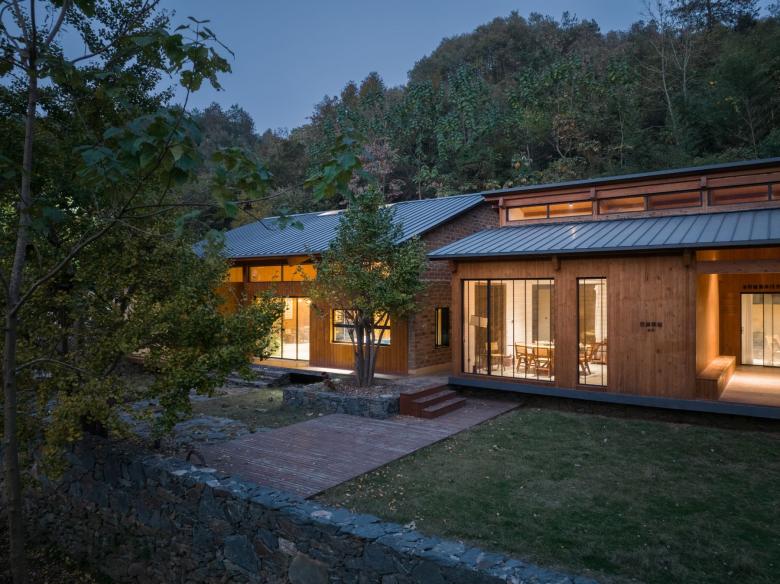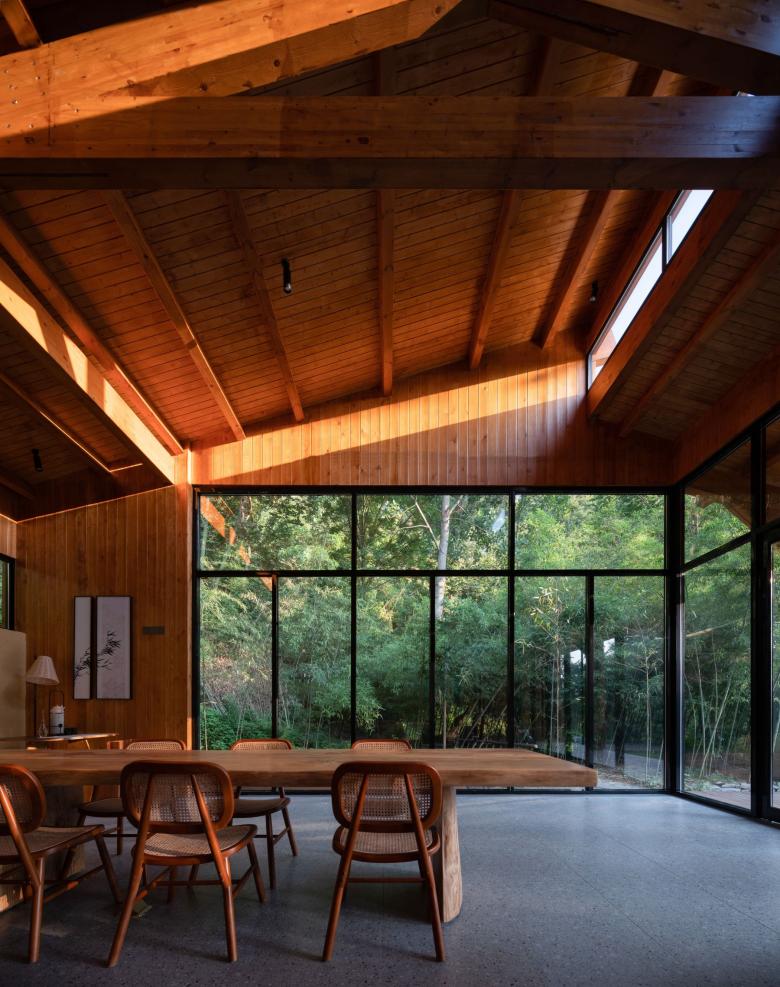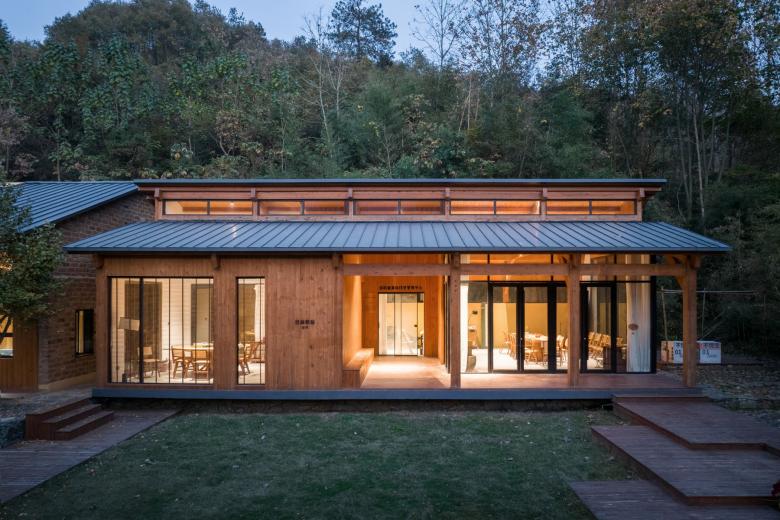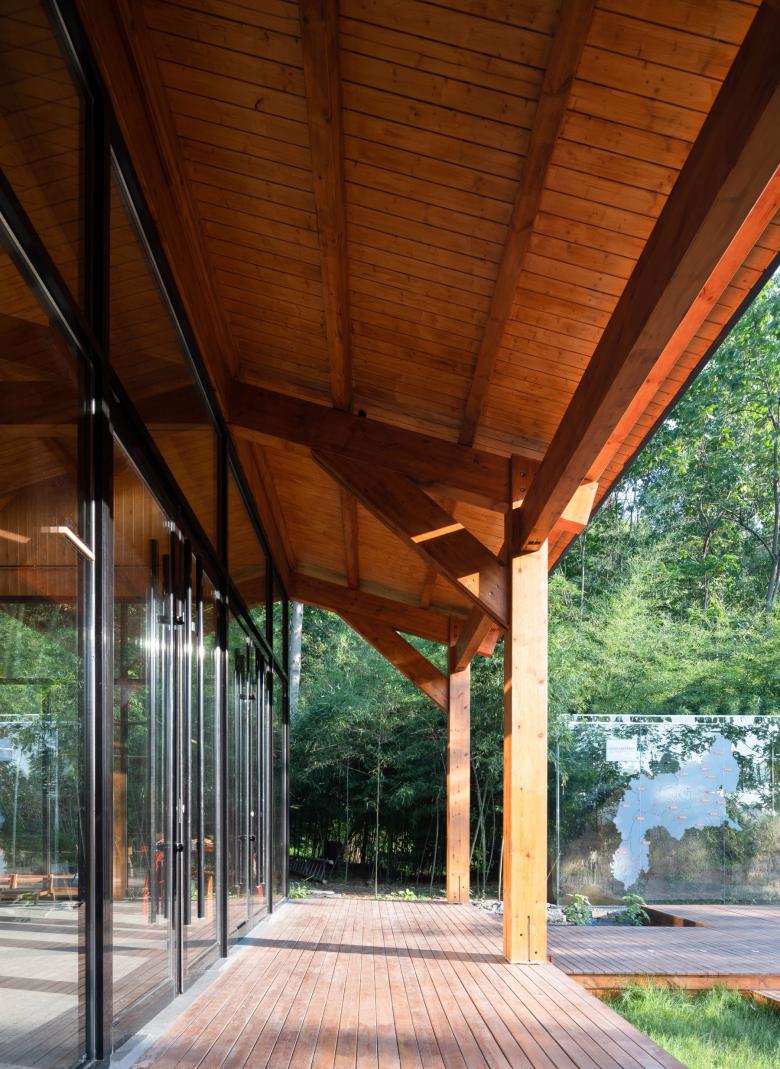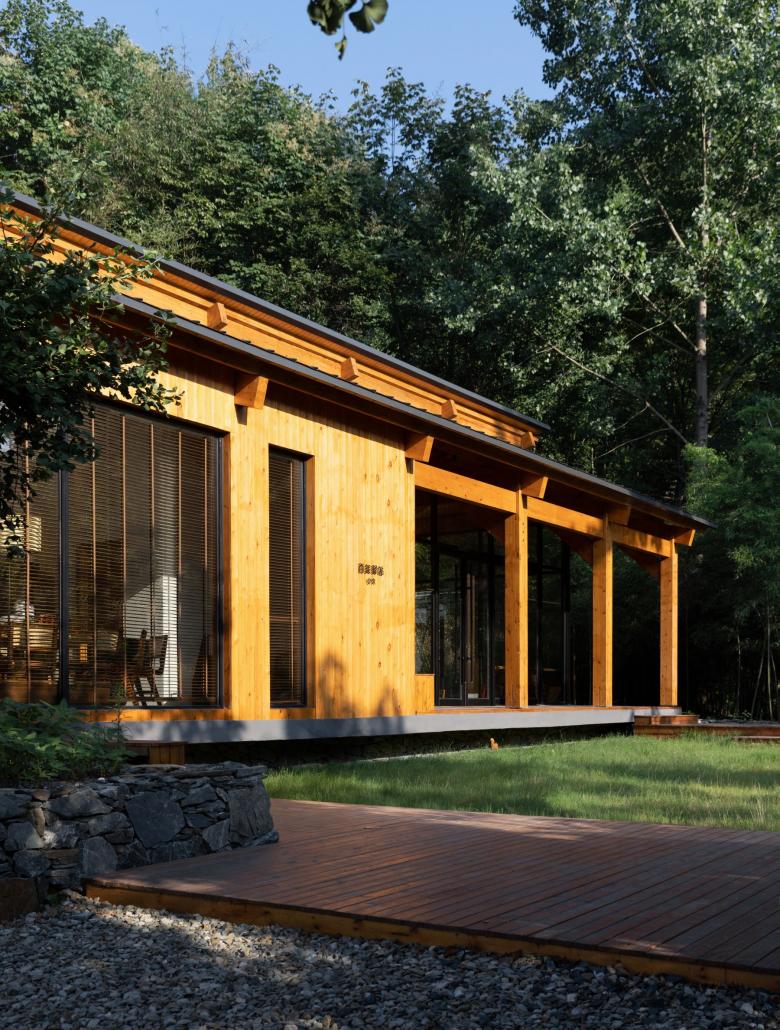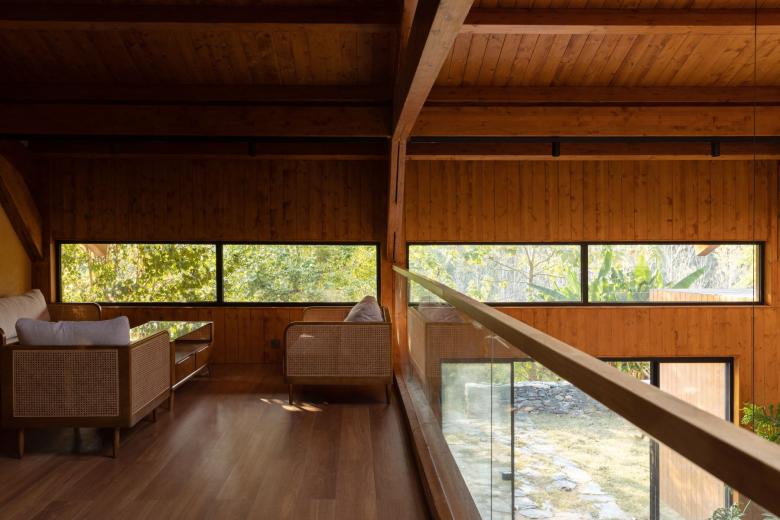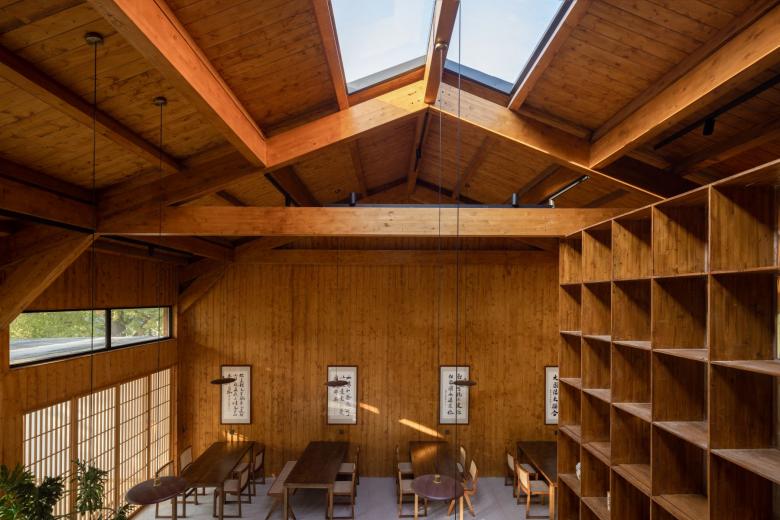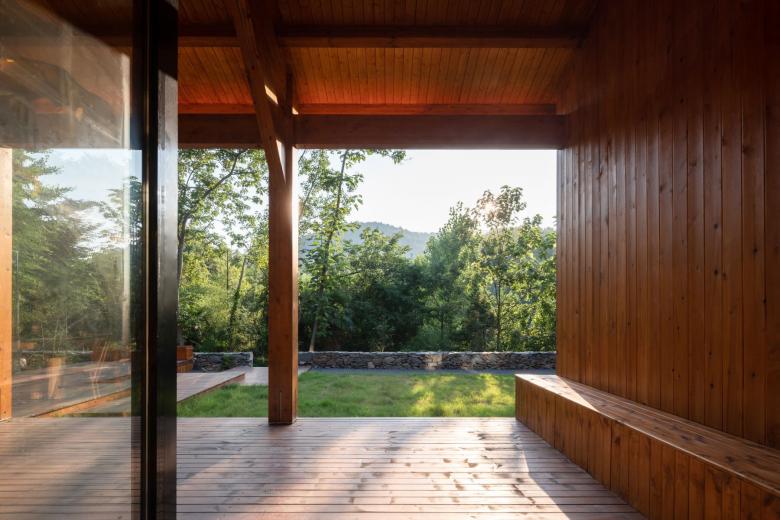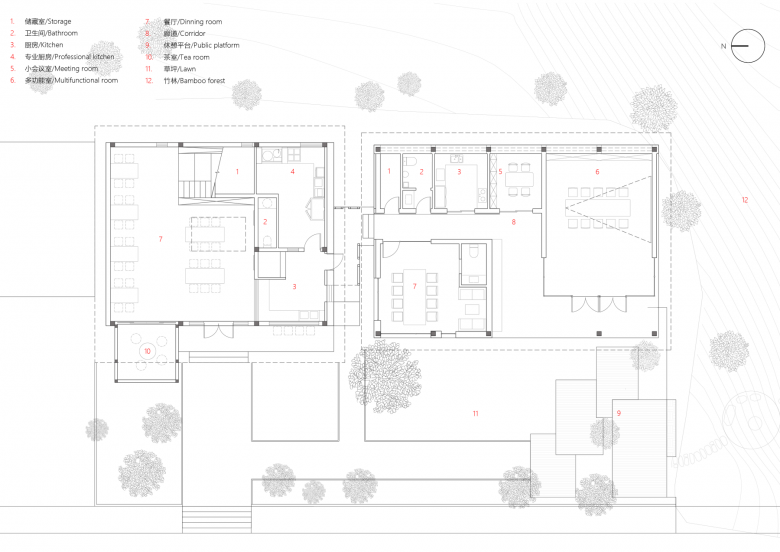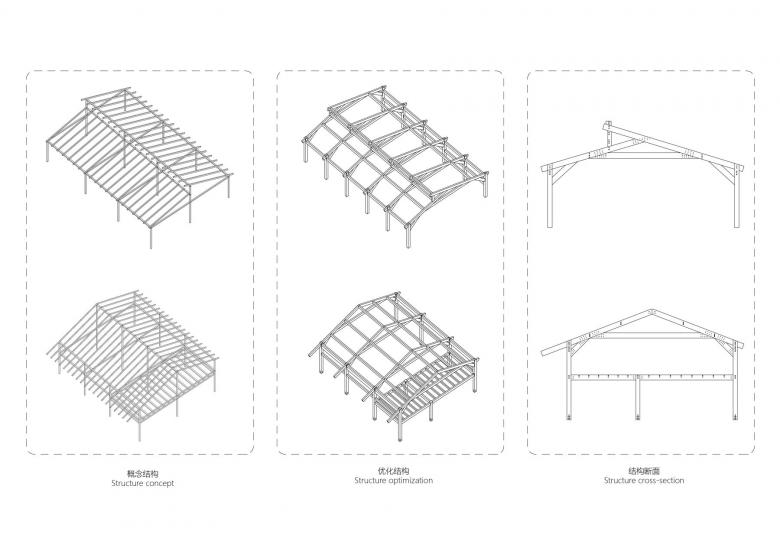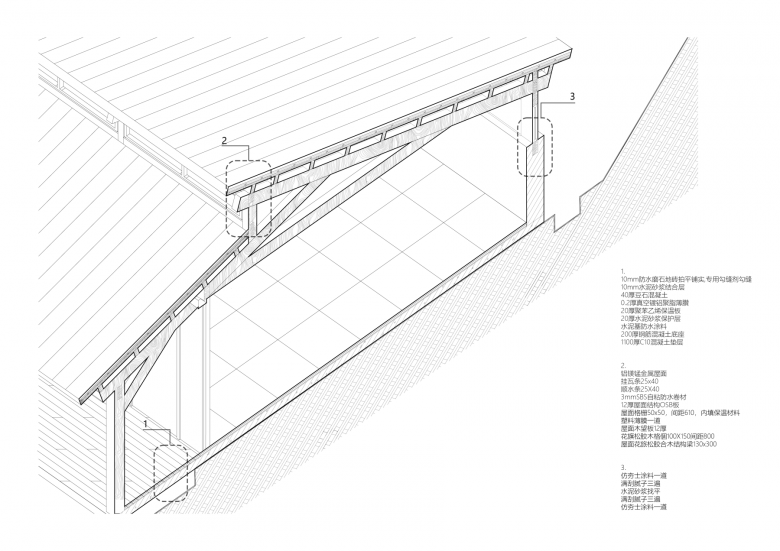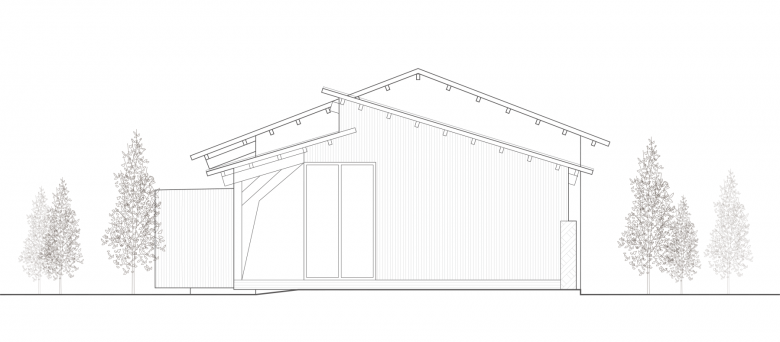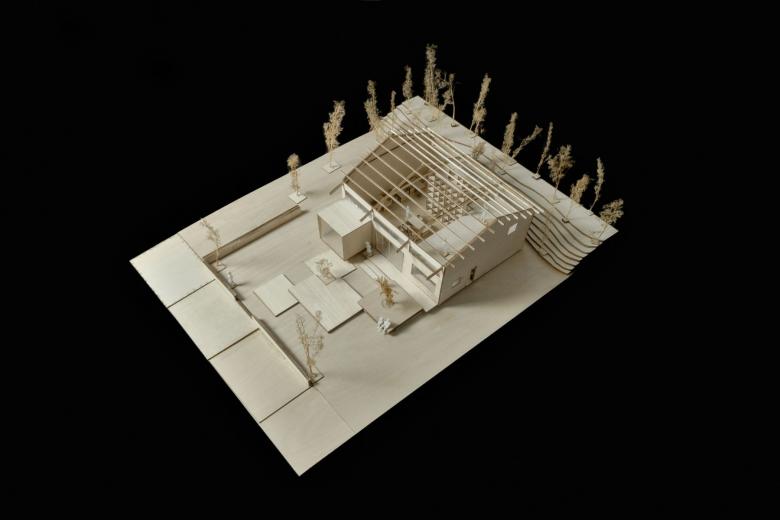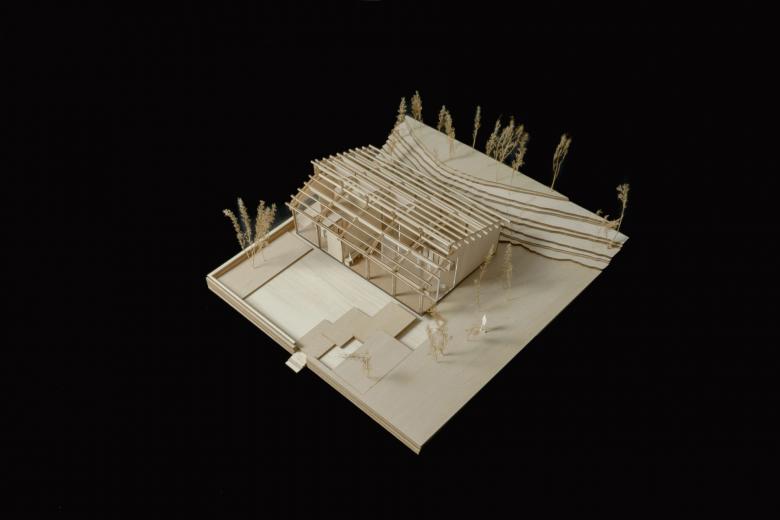Suizhou Baimei Station
Suizhou
- Architekten
- UP Architecture | UPA
- Standort
- Suizhou
- Jahr
- 2023
- Bauherrschaft
- China Foundation For Rural Development, People's Government of Luoyang Town Zengdu District Suizhou City
- Team
- Zhou Chao, Deng Kechao, Luo Junxian, Xie Ding, Wa Yazhuo, Guo Fumin
Located in Luoyang Town, Zengdu District, Suizhou City, the Millennium Ginkgo Valley is one of the most densely distributed, largest and best-preserved ancient ginkgo communities in the world. Since 2021, China Foundation for Rural Development (CFRD), together with the People's Government of Zengdu District, Suizhou City carry out rural revitalization activities in Luoyang Town during the period of upgrading of the Millennium Ginkgo Valley. They take Baimei Village (Lost Villa - Ginkgo Valley) as a pioneer to drive the comprehensive development of the township. Baimei Station is the pioneer demonstration building of that, aiming to provide cultural, exhibition and activity space for the countryside.
Baimei Stage locates in Jiukouyan Village, Luoyang Town, only 7 minutes drive from Baimei Village. The site which is located halfway up the mountain connects to the village road with a 3-meter wide path.The strip-shaped site faces west, with a view of the verdant green hills. There are two houses , a vacant house site in the site and a two-hundred-year old ginkgo tree in the courtyard. Beautiful scenery and dilapidated houses in front of you and chickens and dogs running around in the yard present a pleasant rural scene.
The scene at the beginning of the site selection is still fresh in our mind. We always believe that if there are villagers living here, it means that this is a real countryside, and the value of the station can only be emphasized if it is built in a real countryside. Of course, this also brings new issues, how to integrate the new building into this site, and how the publicity of the station can coexist with the daily life of the villagers?
Rustic dailiness – The two buildings of the Baimei Station were not built at the same time. Building No.1 was constructed on the vacant home site and completed in May 2022 and Building No.2 was demolished the old adjacent house firstlyand completed a year later. The two houses almost maintain the original base contours, with only Building #2 sticking out of a view box, suggesting a boundary. The site of the station has an elevation difference of 1-2 meters from the road, and the interior forms a unified yard with only a bamboo fence between it and the preserved houses to block the entry of poultry.
At the same time, we enhanced the landscape around the site.The part contains parking lot, trail at the foot of the hill and the pond and bamboo forest around the house. We hope that the new building can be integrated into the current state of the countryside rather than transplanting a simple urban public space, so we call it a "Rustic dailiness" and develop it from the perspective of both the space and the events in the countryside. On the one hand, we preserve the original elements of the site, including the stone wall, the stone steps and the rammed earth remnant wall, so that the daily life of the rural memory can be maintained. On the other hand, we ensure the openness of the station, so that the activities in the visitors and the activities of the residents can happen at the same time and be integrated into the daily life of the countryside.
Multiple lightweight – Continuing our idea of "light intervention" in the countryside, the Baimei Station is constructed with wood-frame assembly. Both buildings use the same structural prototype, a timber frame system with a span of 10 meters and no columns, while the double-sloped roof of Building No.1 is staggered to form side-height windows, and the interior of Building No.2 has a mezzanine floor and a large stepped book bar. The main structure is made of Douglas fir glued laminated timber, while other parts of the building use a diversified approach, such as masonry combined with wood veneer on the main wall, re-built piece of adobe brick wall, steel structure, piece of adobe brick wall, and a view box suspended by steel structure, etc., As the result the building looks like airy and penetrating.
The wood structure fully reflects the advantages of construction, and the main body can be assembled in one week, which is constructed by the villagers themselves.Lightweight materials and construction methods, compared with the traditional masonry, concrete and other construction methods, not only improve construction efficiency but also less pollution to the environment by using sustainable development of materials——wood,and better able to present the beauty of natural materials.
Native to nature – Baimei Station is a rural public space, but also a place to feel the nature, light, earth wall and plants are all materials in the site. Building No.1’s colonnade and high windows capture the afternoon sunlight, and the interweaving of light and shadow creates a poetic spatial ambience. Building No.2’s original earth brick wall had long cracks, and it was rebuilt during the construction, and it has become the opposite view at the end of the corridor of Building No.1, so that people can feel the traces of the history.
The design utilizes the gable porch, the mezzanine strip window and the view box to crop the exterior scenery. Here you can hear the rustle of wind-blown bamboo leaves, see the golden ginkgo leaves all over the ground, and the verdant green hills in the distance, allowing you to feel the native nature and experience the tranquility and beauty of the countryside.
Conclusion – With new villagers as the main managers, Baimei Station attracts more young people's footsteps and takes the role of a "village meeting room" in Jiukouyan Village. The functions of the station are also becoming more and more rich and complete, with more and more creative activities, such as rural revitalization exchanges, cultural salons, handicraft courses and casual dining, etc., making it become a vibrant space in the countryside. This process also fully reflects that the focus of rural revitalization lies in the return of people and the gathering of popularity. Meanwhile, the villagers next door are living and working as they used to, which is exactly the state we hope for.
Dazugehörige Projekte
Magazin
-
Building Bridges with Chris Luebkeman
vor einem Tag
-
Winners of 2024 EU Mies Awards Announced
vor einem Tag
-
Six Decades of Antoine Predock's Architecture
vor 5 Tagen
-
WENG’s Factory / Co-Working Space
vor 5 Tagen
-
Reusing the Olympic Roof
vor einer Woche
